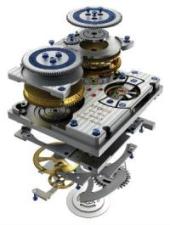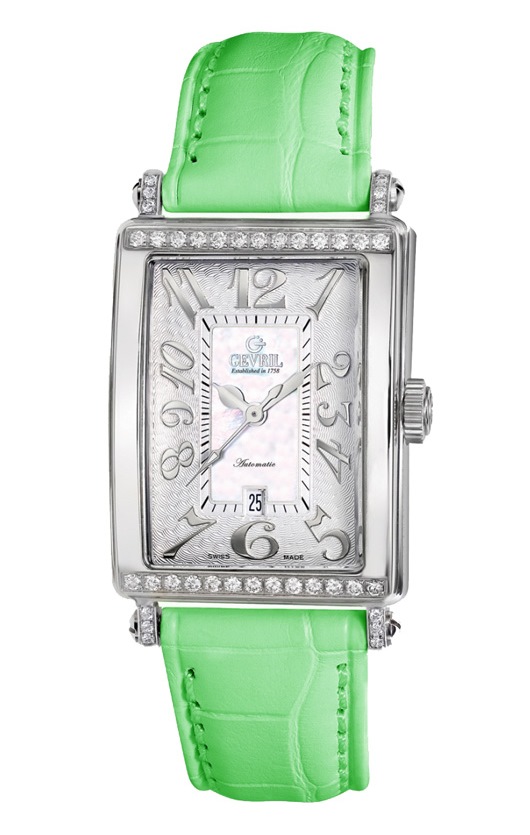 When quartz watches were first introduced in the 1960’s, many people thought that traditional mechanical watches would become obsolete. Exactly the opposite has happened. In recent years, mechanical watches have enjoyed a remarkable renaissance. Today, exciting new mechanical designs appear every year at Baselworld and consumers have never had a better selection of fabulous mechanically powered timepieces to choose from.
When quartz watches were first introduced in the 1960’s, many people thought that traditional mechanical watches would become obsolete. Exactly the opposite has happened. In recent years, mechanical watches have enjoyed a remarkable renaissance. Today, exciting new mechanical designs appear every year at Baselworld and consumers have never had a better selection of fabulous mechanically powered timepieces to choose from.
Basically, all mechanical watches have the same internal parts and work the same way. A coiled mainspring powers the watch. This spring is attached to a geared barrel that drives a series of small, geared wheels that rotate to turn the hands. The speed of this gear train is controlled by a balance wheel that oscillates back and forth, moving an escapement mechanism that moves the gears in precise increments. This movement allows the hands to indicate the correct time on a dial that is usually marked in twelve-hour increments. It is the movement of the escapement mechanism that creates the familiar ticking sound of a mechanical timepiece.
Although these basic principles are the same for virtually all of today’s mechanical watch movements, there have literally been hundreds of innovations overs the years that have been used to add additional timekeeping functions to the basic mechanical mechanism. These additional functions are traditionally called complications and generally speaking, the more complications, the more expensive the watch.
One of the most popular watch complications is a self-winding mechanism that winds the mainspring automatically on automatic watches using natural motions of the wearer’s wrist. Other popular complications include calendars, alarms, moon phase and power reserve indicators. Extreme examples of mechanical complexity include repeater mechanisms that allow the watch to chime the hours at the touch of a button and tourbillon mechanisms that mount the balance wheel in a special rotating cage to counteract gravitational forces that could lead to timing inaccuracy.
Virtually all mechanical watches use jeweled bearings to reduce the friction caused by the moving mechanical parts. These jeweled mechanical wonders can be remarkably accurate, with some models receiving official chronometer certification. Watch aficionados don’t purchase a fine mechanical watch for accuracy alone however. These precisely crafted timepieces are showcases for the watchmaker’s art. Most popular watch manufacturers, including Fortis and Louis Erard, make both quartz and mechanical models. Both types of movement have their fans and serve their purpose well. Although the basic design of mechanical watches is over 300 year old, these marvels of complexity are as relevant today as they’ve always been. There is no better way to display your personal style and appreciation for the watchmaker’s art than having a fine mechanical watch on your wrist.
About Gevril Group
 Gevril Group, watchmaker and wholesale watch distributor, is the exclusive U.S. agent for exquisitely designed and crafted European luxury and fashion watch brands, distributing and servicing some of the best affordable luxury watches, Swiss made watches and trendy fashion watches. Gevril Group also operates a full-service watch repair, staffed by master Swiss watchmakers. Contact Gevril Group by email or by calling 845-425-9882.
Gevril Group, watchmaker and wholesale watch distributor, is the exclusive U.S. agent for exquisitely designed and crafted European luxury and fashion watch brands, distributing and servicing some of the best affordable luxury watches, Swiss made watches and trendy fashion watches. Gevril Group also operates a full-service watch repair, staffed by master Swiss watchmakers. Contact Gevril Group by email or by calling 845-425-9882.
Join the conversation! Follow Gevril Group on Facebook, Twitter and LinkedIn.
Please subscribe to the Gevril Group newsletter and blog digest.






